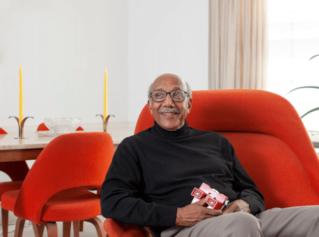In 1950s America, few people at all were pursuing careers in industrial design. Charles “Chuck” Harrison was one of them. He had talent and degrees from both the School of the Art Institute of Chicago and the Illinois Institute of Technology, but after applying to Sears for an ID gig, he was rejected for a single reason: Because he was black.
Sears’ hiring manager, however, recognized Harrison’s talent and was able to secure freelance work for him. Not having any African-Americans on staff was the unwritten rule of the time, but the freelance workaround enabled Harrison to start gaining real-world experience.
One of Harrison’s former professors at Chicago was Henry P. Glass, the Viennese architect and designer. As a Holocaust survivor, Glass knew the ugly face of discrimination well, and having observed Harrison’s skills first-hand, helped him secure work at a design firm. In 1958, while working at Robert Podall Associates, Harrison updated the design of the popular View-Master toy, creating the iconic form many of us recognize today (even though Harrison’s Bakelite had given way to plastic by the time of our childhoods.)
By 1961 American society had begun poking small holes in the racial barrier, and Harrison got a phone call from Sears: They wanted him on staff. Harrison accepted, and embarked on a prolific career in design.
The breadth of Harrison’s work is like an industrial designer’s dream: Over the next thirty years he designed Craftsman power tools, radios, hairdryers, sewing machines, kitchen appliances, steam irons, televisions and more, spanning objects that you’d find in every room of the American house, including the garage and the toolshed.
Harrison’s favorite project was a humble one with a profound effect: The first plastic garbage can. At the time of its release all other garbage cans were metal, which made a terrific racket when the trucks came to pick up the trash each morning. Harrison’s plastic can was decidedly quieter. And he doesn’t mind that his contribution is largely unsung: “As an industrial designer especially, your audience is neither history nor fame,” he writes, “but a couple who worked hard to buy their first home on a quiet street and would love just one more hour of sleep in the morning, even on trash day.” On the practical side, he designed the can to nest, meaning they took up far less space for shipping and warehousing…
Read more: core77.com

